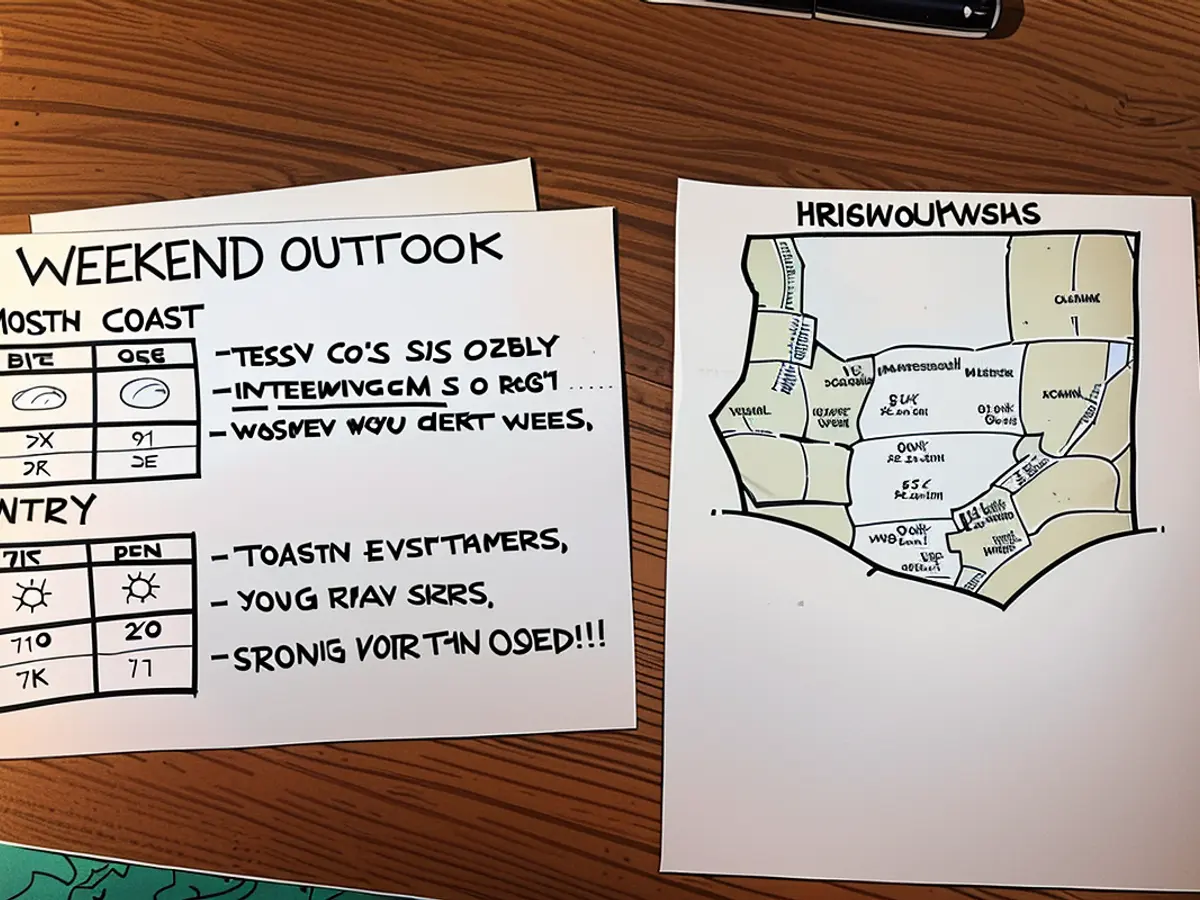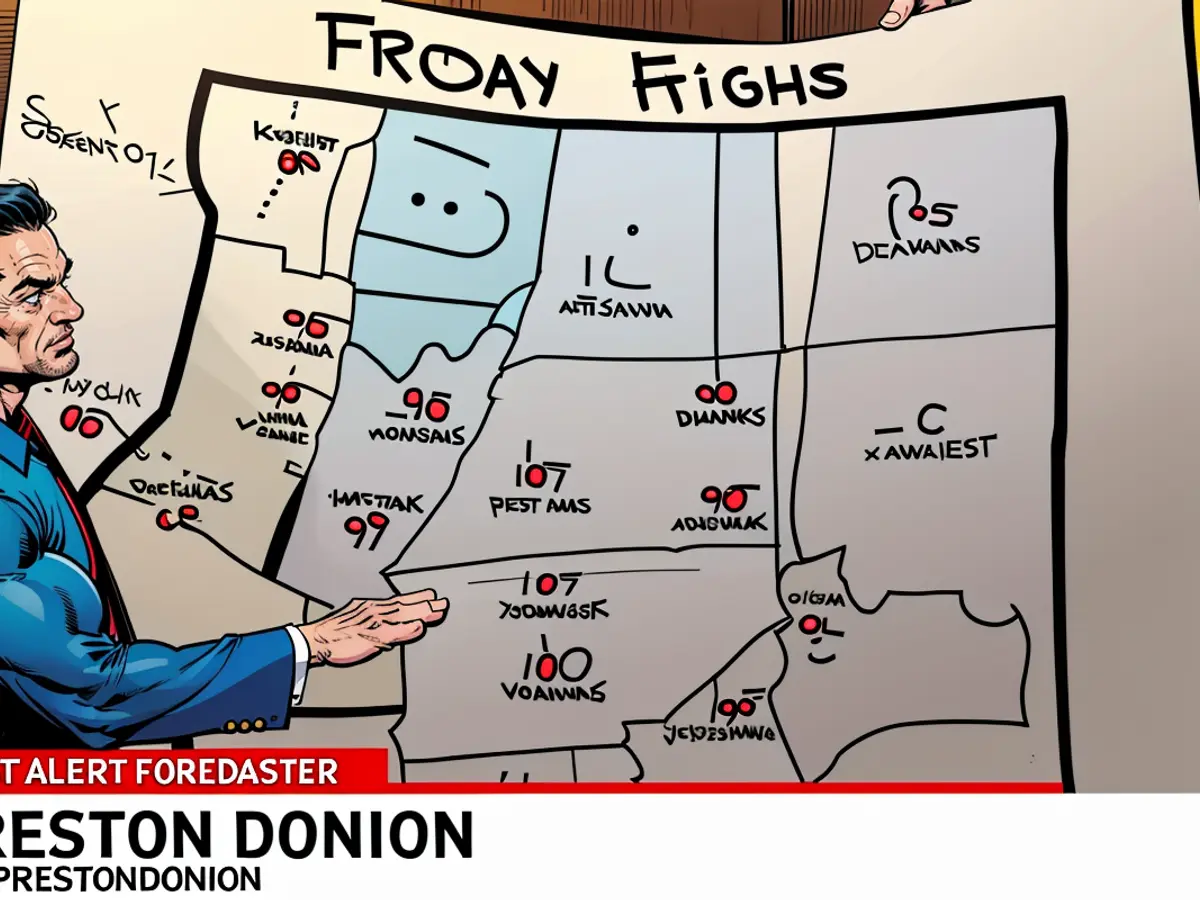The global software outage affected this forecaster’s broadcast. He took the weather report into his own hands – literally
On Friday, many computer systems for healthcare, business, technology and government sectors worldwide crashed after cybersecurity firm CrowdStrike issued a software update for Microsoft Windows operating systems.
The widespread disturbance affected 8.5 million Windows devices, or fewer than 1% of all Windows machines, Microsoft said Saturday. The lengthy process of restoring operations continued on Saturday.
But early Friday morning, Preston Donion, a forecaster and multimedia journalist for CNN affiliate KRCR in Redding, California, says he woke up to chaos after “everything had gone completely haywire” with the systems at his job the night before.
“They didn’t end up even running a broadcast on our stations at 10 and 11 (p.m.), so they were really kaput,” Donion told CNN on Saturday.
He says he rushed into work to find that, sure enough, they had no weather graphics available.
Donion and his producer teamed up to figure out how they could display a weather forecast on air with the systems down, he said.
“Because I have my numbers, I can get my forecast built, but I have no way to communicate that,” recalled Donion, who’s worked at KRCR since June 2022.

He says he spent the first half hour of the show pulling up websites or screen sharing from one of the station’s iPads and stepping off the screen to read numbers.
“But I realized that wasn’t very engaging, wasn’t very effective,” Donion said.
About 45 minutes into the broadcast, the Washington native says he used a Sharpie and a pen to draw a rough sketch of a map he had saved as a reference for familiarizing himself with California.
“I just went to work on the back of a piece of paper that had my rundown on it, and just did my best,” Donion said.
His on-air solution to the tech fiasco turned out to be the hand-drawn maps of his coverage area, which he admitted to viewers weren’t “perfect” renderings.
“I just drew this up,” Donion can be seen telling local viewers in a video he shared to his X account Friday. “I know Trinity County looks like it’s been on somewhat of a diet there, and things are a little square in Modoc County, but I wanted to give you a visual.”
He also shared on air the seven-day forecast using a chart he typed in his phone’s Notes app, the video shows.
“I thought it was the best way to just kind of put together some visuals without having computer technology, so it was fun to me,” said Donion. One viewer commented the retro approach to the forecast took them back to the 1970s, when TV meteorologists used paper maps and magnets in their weather centers, he said.
“I definitely got some messages on Facebook and on Twitter saying, ‘Hey, you know, thanks for adapting. We appreciate you just getting the information out,’” Donion said.
“Other meteorologists have reached out and said, ‘You know, I was thinking I’d have to get my magnets out,’” he added.
Many of KRCR’s systems were back online by the end of Donion’s shift around 11 a.m. local time Friday, and the evening shows went smoothly, he shared.
CNN Meteorologist Elisa Raffa gave kudos to Donion for his quick thinking.
While learning about meteorology in school, Raffa says weather students learned to hand-draw fronts and storm systems.
“It’s a skill you never think you’ll need again – until the computers go out,” Raffa said.
“And if you ask a 30-plus-year veteran in the industry, they’d be happy to remind us that this was how weather was done before the magic of green screens,” she added. “Markers, chalk, magnets and a whole lot of paper were used to get a forecast on TV. It’s amazing how much we depend on technology now!”
CNN’s Dalia Faheid contributed to this report.
Despite the cyberattack affecting their systems, our team at KRCR managed to deliver the weather forecast using hand-drawn maps and a phone-typed chart. This incident reminded us that even with advanced technology, we still relied on basic tools in the past.
During the chaos, Preston Donion, a meteorologist at KRCR, shared his hand-drawn maps and phone-typed forecast on air, demonstrating the resilience of journalists to adapt and maintain communication with their audience.








